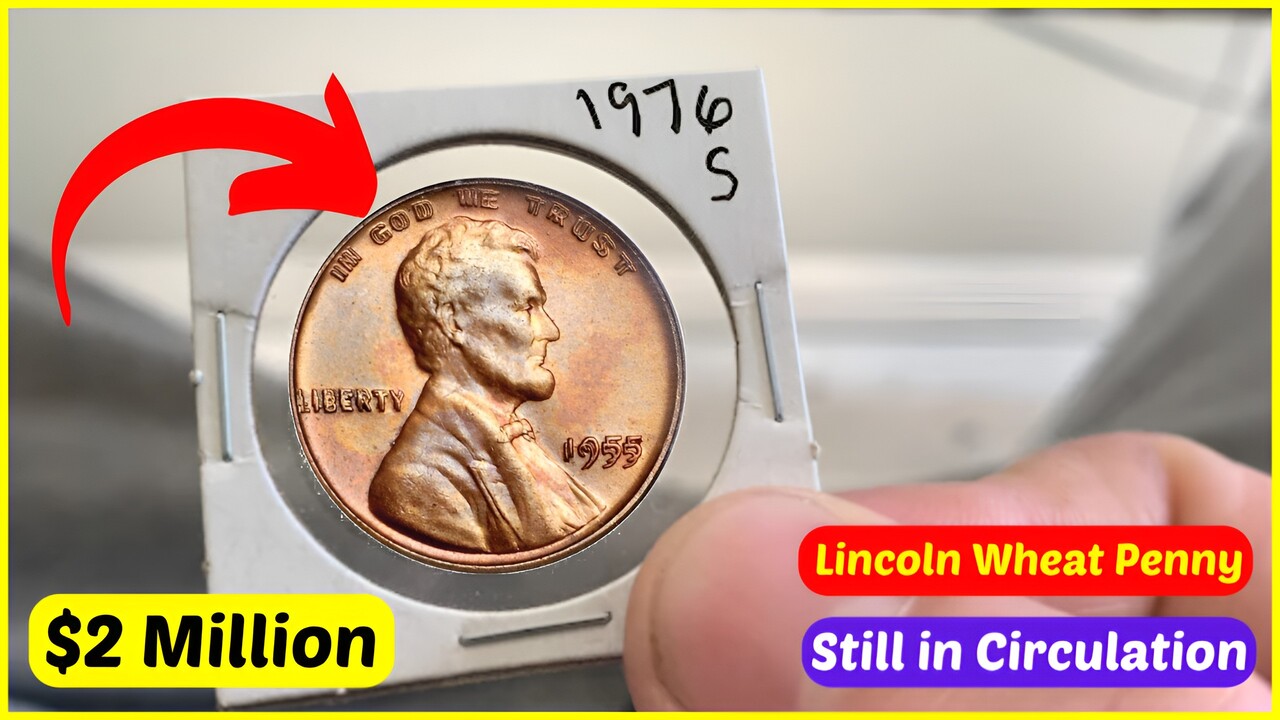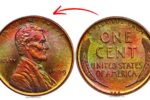The Lincoln Wheat Penny Worth $2 Million: Imagine finding a simple penny in your pocket that turns out to be worth millions! It may sound unbelievable, but the 1943 Lincoln Wheat Penny is one of the rarest and most valuable coins in U.S. history, with one selling for a staggering $2.2 million. Due to a rare minting error, only a handful of these pennies exist today. But could one still be in circulation? Let’s explore the history, value, and ways to identify this extraordinary coin.
What is the Lincoln Wheat Penny?
The Lincoln Wheat Penny was first introduced in 1909 and remained in circulation until 1958. It features a portrait of Abraham Lincoln on the front and two wheat stalks on the back, which is why it’s called a Wheat Penny. While most Wheat Pennies were made of copper, an unusual change during World War II led to the creation of one of the rarest pennies ever minted.
Why is the 1943 Lincoln Wheat Penny Worth $2.2 Million?
During World War II, copper was in high demand for military use, so the U.S. Mint decided to make pennies from zinc-coated steel instead. However, a few leftover copper planchets (coin blanks) from 1942 were accidentally used to mint a small number of 1943 copper pennies. This minting error, combined with the extreme rarity of these coins, has made them highly sought after by collectors and investors alike.
Reasons for Its High Value:
- Minting Error: The coin was mistakenly made of copper instead of steel.
- Extremely Rare: Only about 20–40 genuine pieces are known to exist.
- High Demand: Collectors and investors are willing to pay millions for this coin.
- Record-Breaking Sales: One such penny was sold for $2.2 million at an auction.
Because of these factors, the 1943 Copper Lincoln Wheat Penny is considered one of the most valuable U.S. coins ever produced.
How to Identify a 1943 Copper Penny
Since most 1943 pennies were made of steel, you need to check carefully if you have the rare copper version. Here’s how:
Steps to Identify a Rare 1943 Copper Penny:
- Check the Date: Look for “1943” on the front of the penny.
- Magnet Test: Place a magnet near the coin. If it sticks, it’s a common steel penny. If it does not stick, it might be the rare copper version.
- Check the Color: Copper pennies have a reddish-brown color, while steel pennies are silver-gray.
- Look for Signs of Wear: A real 1943 copper penny will show natural signs of aging and oxidation.
- Get Expert Verification: If you think you have a rare coin, consult a professional coin dealer or send it to a grading service like PCGS or NGC for authentication.
Are These Rare Pennies Still in Circulation?
While most 1943 copper pennies have been discovered, some experts believe that a few could still be out there. Many people do not closely inspect their pennies, which means one of these rare coins could be sitting in a jar or wallet without being noticed.
Other Valuable Lincoln Pennies to Look For
The 1943 Copper Lincoln Wheat Penny is not the only valuable penny out there. Here are a few other Lincoln pennies that collectors should keep an eye out for:
- 1955 Double Die Penny: This penny features a noticeable doubling of the date and lettering on the front of the coin. It is highly sought after by collectors and can be worth thousands of dollars.
- 1909-S VDB Penny: This penny was minted in San Francisco and features the initials of the coin’s designer, Victor David Brenner, on the reverse. It is one of the most valuable Lincoln pennies, with some examples selling for over $1,000.
- 1914-D Penny: This penny was minted in Denver and is considered one of the rarest Lincoln pennies. It can be worth several thousand dollars in good condition.
Conclusion
The possibility of a $2 million Lincoln Wheat Penny still being in circulation is exciting for coin collectors. While finding one is rare, it is not impossible. So, next time you find a penny in your change, take a closer look you might just be holding a fortune in your hands!
Disclaimer: Coin values fluctuate based on condition, rarity, and market demand. The $2 million valuation is speculative and not a guaranteed price. Always verify rare coin details with an official numismatic expert or grading service before making any financial decisions.




